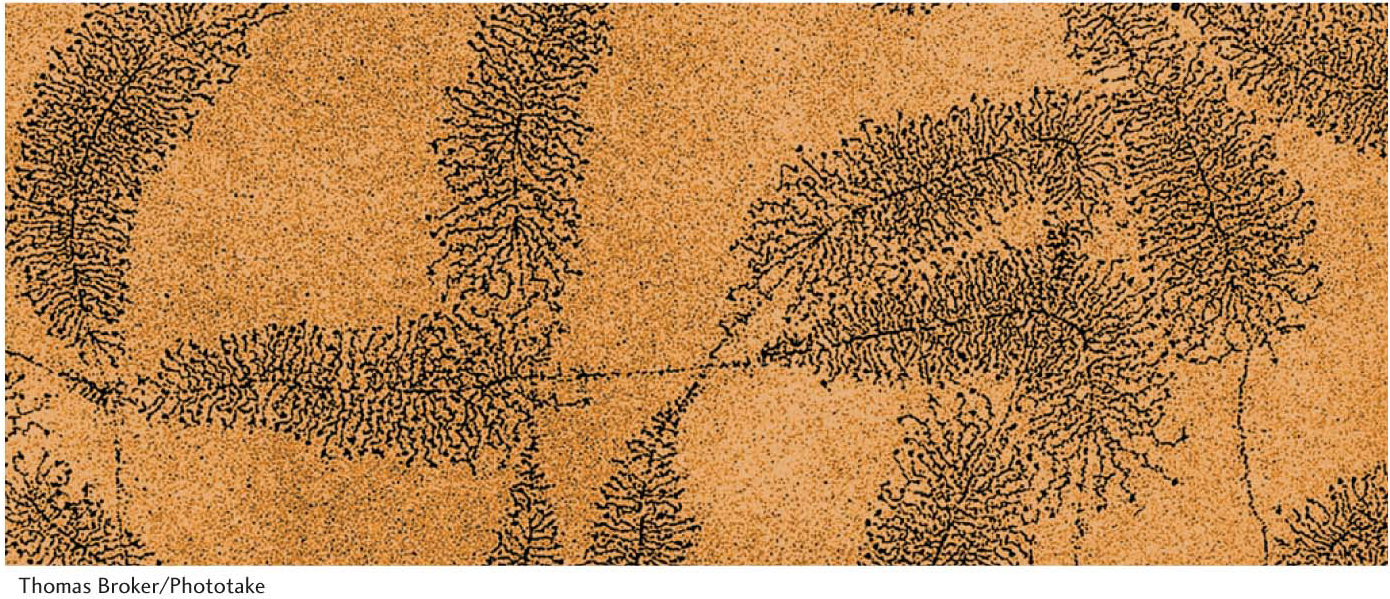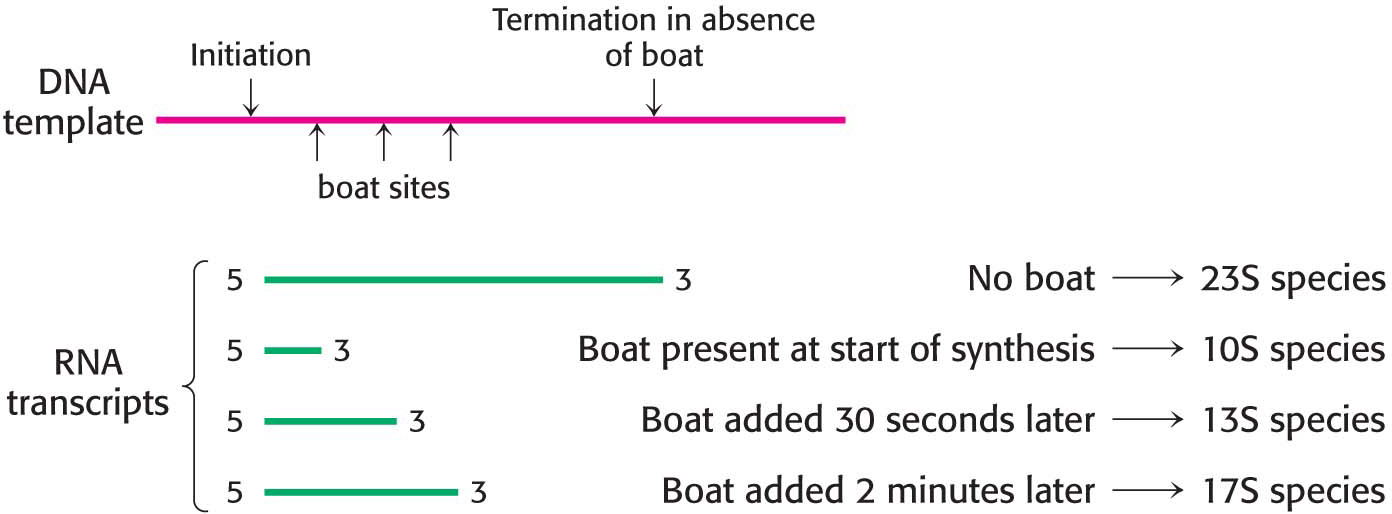PROBLEMS
Question 36.1
1. The process of recording. Define transcription. ✓ 1
Question 36.2
2. Different strands. Explain the difference between the coding strand and the template strand in DNA. ✓ 1
Question 36.3
3. True of many endeavors. What are the three stages of RNA synthesis? ✓ 1
Question 36.4
4. Necessary ingredients. What components does RNA polymerase require for the synthesis of RNA? ✓ 1
Question 36.5
5. Location, location, location. What is the function of the sigma subunit in transcription? ✓ 1
Question 36.6
6. Like stalagmites and stalactites. Match each term with its description. ✓ 1
Transcription RNA polymerase Sigma (σ) factor Promoter Consensus sequence Rho (ρ) Operon Operator Repressor Inducer | Transcriptional machinery RNA synthesis Consists of regulatory elements and protein- Prevents the transcription of structural genes The average order of nucleotides Recognizes promoter sites In the lac operon, allolactose DNA sequences that determine the site of transcription initiation RNA- Repressor binding site |
Question 36.7
7. Comparisons. Compare transcription with replication.
Question 36.8
8. A gene advocate. What is a promoter?
Question 36.9
9. Cerrada/Abierta. Distinguish between a closed promoter complex and an open promoter complex.
Question 36.10
10. Complements. The sequence of part of an mRNA is
5′-AUGGGGAACAGCAAGAGUGGGGCCCUGUCCAAGGAG-
What is the sequence of the DNA coding strand? Of the DNA template strand?
Question 36.11
11. Checking for errors. Why is RNA synthesis not as carefully monitored for errors as is DNA synthesis?
Question 36.12
12. Speed is not of the essence. Why is it advantageous for DNA synthesis to be more rapid than RNA synthesis?
Question 36.13
13. A loose cannon. The σ protein by itself does not bind to promoter sites. Predict the effect of a mutation enabling σ to bind to the −10 region in the absence of other subunits of RNA polymerase. ✓ 1
Question 36.14
14. Stuck sigma. What would be the likely effect of a mutation that would prevent σ from dissociating from the RNA polymerase core? ✓ 1
Question 36.15
15. Transcription time. What is the minimum length of time required for the synthesis by E. coli polymerase of an mRNA encoding a 100-
Question 36.16
16. Between bubbles. How far apart are transcription bubbles on E. coli genes that are being transcribed at a maximal rate?
Question 36.17
17. Anything like Robocop? Define riboswitch, and explain its role in the regulation of RNA synthesis. ✓ 2
Question 36.18
18. Missing genes. Predict the effects of deleting the following regions of DNA: (a) the gene encoding lac repressor; (b) the lac operator; (c) the gene encoding CAP. ✓ 2
Question 36.19
19. Unavailable resources. Lac operon mutants that lack permease activity exist. Even though the gene for β-galactosidase is intact, the enzyme is not induced when lactose is added to the bacterial growth medium. Why? ✓ 2
Question 36.20
20. Not such a random walk. RNA polymerase is a large enzyme, and one of its substrates, DNA, is a large biomolecule with thousands to millions of bases. Yet, RNA polymerase can locate a promoter sequence in DNA faster than two small molecules can collide in solution. Explain this apparent paradox. ✓ 1
Question 36.21
21. Alterations. What are the three types of tRNA modifications seen in E. coli?
Question 36.22
22. Christmas trees. The adjoining image depicts several bacterial genes undergoing transcription. Identify the DNA. What are the strands of increasing length? Where is the beginning of transcription? The end of transcription? On the page, what is the direction of RNA synthesis? What can you conclude about the number of enzymes participating in RNA synthesis on a given gene? ✓ 1
Challenge Problems
Question 36.23
23. Potent inhibitor. Heparin, a glycosaminoglycan, inhibits transcription by binding to RNA polymerase. What properties of heparin allow it to bind so effectively to RNA polymerase?
Question 36.24
24. Minimal concentration. Calculate the concentration of lac repressor, assuming that one molecule is present per cell. Assume that each E. coli cell has a volume of 10−12 cm3. Would you expect the single molecule to be free or bound to DNA? The dissociation constant for the repressor–
Question 36.25
25. The opposite direction. Some compounds, called anti-
Question 36.26
26. Abortive cycling. Di-
Question 36.27
27. Scientist at work. You have just performed an experiment in which you investigated RNA synthesis in vitro. Interestingly, the RNA molecules synthesized in vitro by RNA polymerase acting alone are longer than those made in vivo. Being the bright scientist that you are, you hypothesized that something was missing from the in vitro system that was present in vivo. To check for this possibility, you added some cell extract and found that the correct termination took place. You purified this protein, which you named “boat” after your interest in sailing. You performed an experiment in which boat was added to the RNA synthesis mixture at various times after the initiation of RNA synthesis. The results are illustrated below. Explain these results. ✓ 2
Selected Readings for this chapter can be found online at www.whfreeman.com/